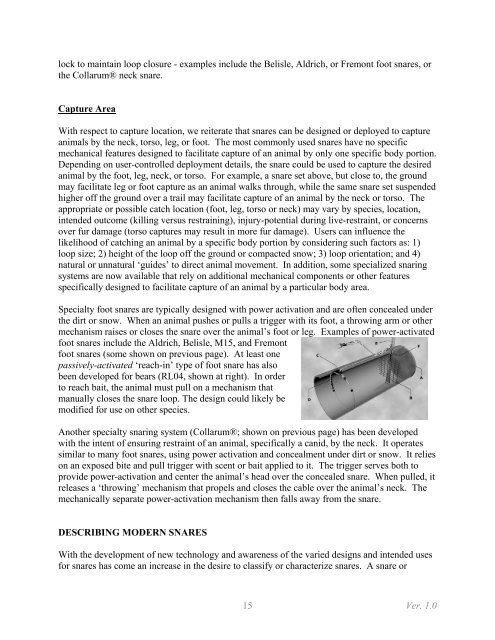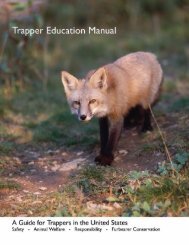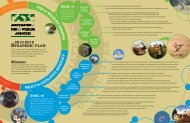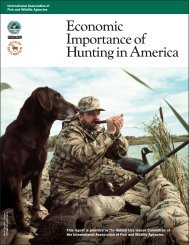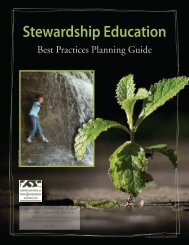Modern Snares for Capturing Mammals: - Association of Fish and ...
Modern Snares for Capturing Mammals: - Association of Fish and ...
Modern Snares for Capturing Mammals: - Association of Fish and ...
- No tags were found...
Create successful ePaper yourself
Turn your PDF publications into a flip-book with our unique Google optimized e-Paper software.
lock to maintain loop closure - examples include the Belisle, Aldrich, or Fremont foot snares, orthe Collarum® neck snare.Capture AreaWith respect to capture location, we reiterate that snares can be designed or deployed to captureanimals by the neck, torso, leg, or foot. The most commonly used snares have no specificmechanical features designed to facilitate capture <strong>of</strong> an animal by only one specific body portion.Depending on user-controlled deployment details, the snare could be used to capture the desiredanimal by the foot, leg, neck, or torso. For example, a snare set above, but close to, the groundmay facilitate leg or foot capture as an animal walks through, while the same snare set suspendedhigher <strong>of</strong>f the ground over a trail may facilitate capture <strong>of</strong> an animal by the neck or torso. Theappropriate or possible catch location (foot, leg, torso or neck) may vary by species, location,intended outcome (killing versus restraining), injury-potential during live-restraint, or concernsover fur damage (torso captures may result in more fur damage). Users can influence thelikelihood <strong>of</strong> catching an animal by a specific body portion by considering such factors as: 1)loop size; 2) height <strong>of</strong> the loop <strong>of</strong>f the ground or compacted snow; 3) loop orientation; <strong>and</strong> 4)natural or unnatural ‘guides’ to direct animal movement. In addition, some specialized snaringsystems are now available that rely on additional mechanical components or other featuresspecifically designed to facilitate capture <strong>of</strong> an animal by a particular body area.Specialty foot snares are typically designed with power activation <strong>and</strong> are <strong>of</strong>ten concealed underthe dirt or snow. When an animal pushes or pulls a trigger with its foot, a throwing arm or othermechanism raises or closes the snare over the animal’s foot or leg. Examples <strong>of</strong> power-activatedfoot snares include the Aldrich, Belisle, M15, <strong>and</strong> Fremontfoot snares (some shown on previous page). At least onepassively-activated ‘reach-in’ type <strong>of</strong> foot snare has alsobeen developed <strong>for</strong> bears (RL04, shown at right). In orderto reach bait, the animal must pull on a mechanism thatmanually closes the snare loop. The design could likely bemodified <strong>for</strong> use on other species.Another specialty snaring system (Collarum®; shown on previous page) has been developedwith the intent <strong>of</strong> ensuring restraint <strong>of</strong> an animal, specifically a canid, by the neck. It operatessimilar to many foot snares, using power activation <strong>and</strong> concealment under dirt or snow. It relieson an exposed bite <strong>and</strong> pull trigger with scent or bait applied to it. The trigger serves both toprovide power-activation <strong>and</strong> center the animal’s head over the concealed snare. When pulled, itreleases a ‘throwing’ mechanism that propels <strong>and</strong> closes the cable over the animal’s neck. Themechanically separate power-activation mechanism then falls away from the snare.DESCRIBING MODERN SNARESWith the development <strong>of</strong> new technology <strong>and</strong> awareness <strong>of</strong> the varied designs <strong>and</strong> intended uses<strong>for</strong> snares has come an increase in the desire to classify or characterize snares. A snare or15Ver. 1.0


